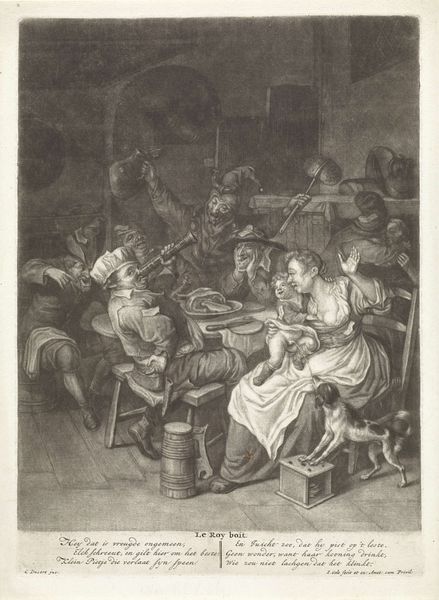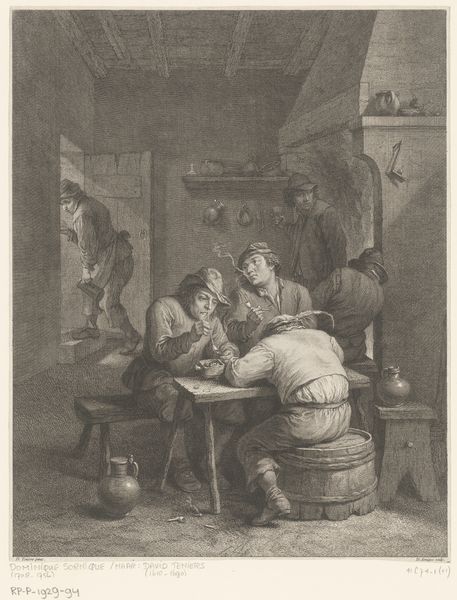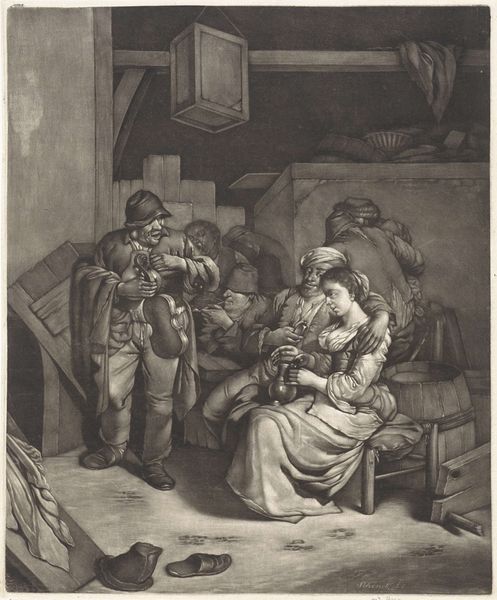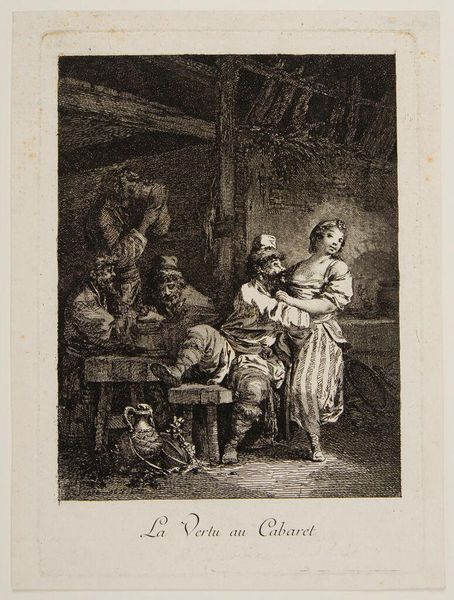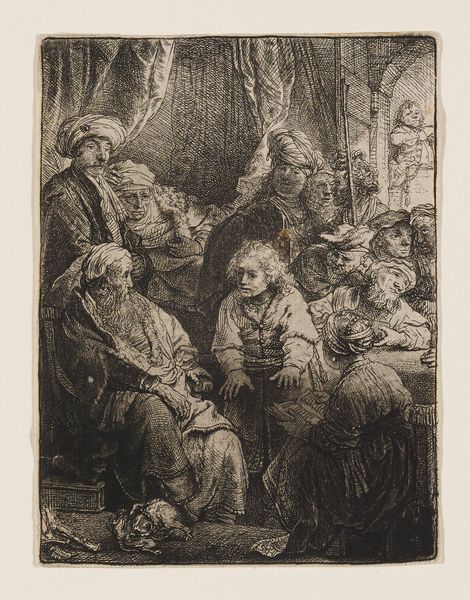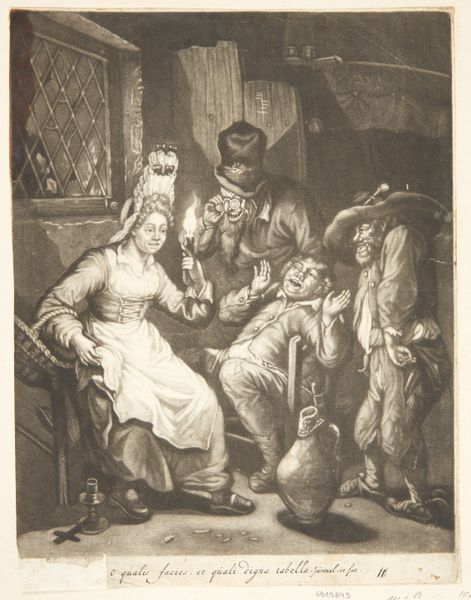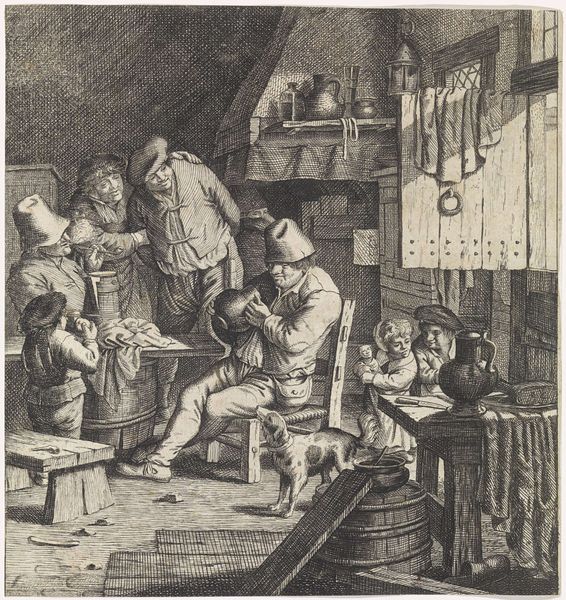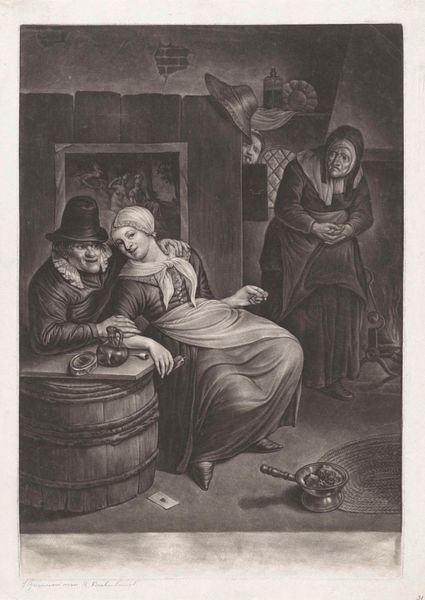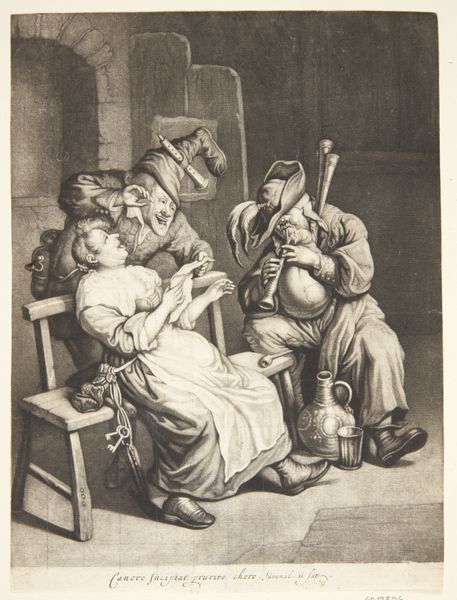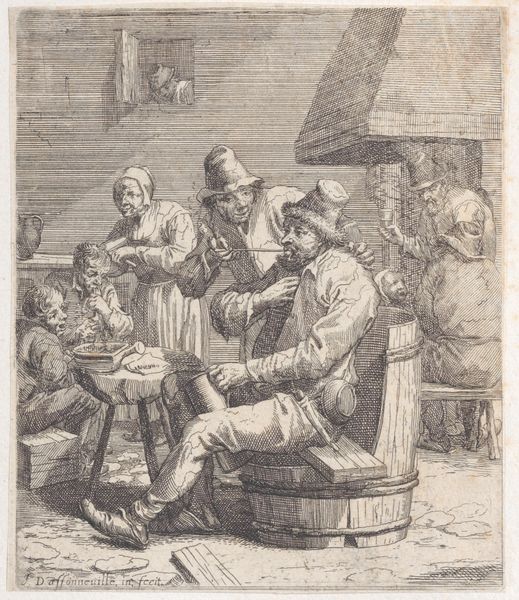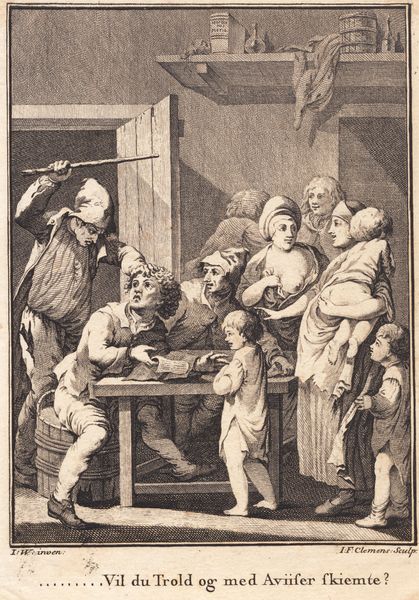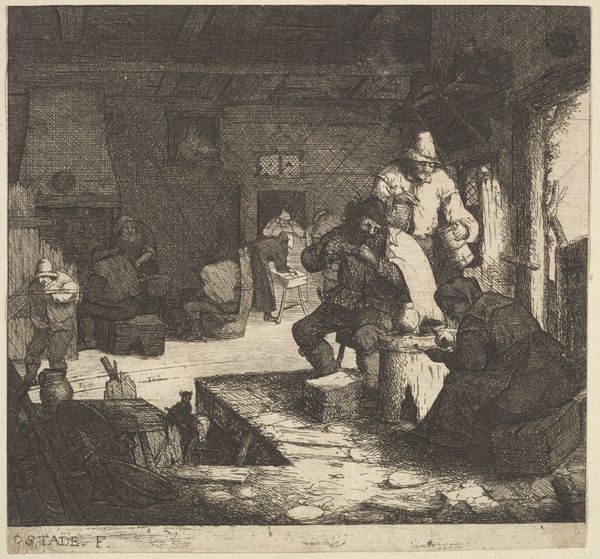
print, etching
#
narrative-art
#
baroque
# print
#
etching
#
genre-painting
Dimensions: height 272 mm, width 198 mm
Copyright: Rijks Museum: Open Domain
Editor: This is Cornelis Dusart's "Driekoningen," dating from between 1670 and 1704, housed at the Rijksmuseum. It’s an etching, giving it a lot of detail despite the seemingly chaotic scene. There's a real sense of merriment, or perhaps even debauchery. What do you see in this piece? Curator: I see a snapshot of Dutch Golden Age society, laid bare with all its contradictions. The image seems like a light-hearted celebration but when you examine it through the lens of socio-economic structures, you realize it's a representation of the common folk celebrating "Driekoningenavond," a holiday resembling more of an excuse for them to engage in practices frowned upon in everyday society. We need to question what this genre scene tells us about power, about acceptable social behaviors for the rich versus the poor. Why do you think Dusart chose to depict this particular scene, and for whom was it intended? Editor: I hadn't considered it that way! I was focused on the immediate action, like the musician and the woman with the baby. You're right, there is a subtle class commentary at play. Perhaps the elite enjoyed viewing these portrayals of the lower classes in an act of escapism of the pressures of maintaining status. Curator: Precisely. And let's not forget that these “genre” scenes often serve a didactic purpose. What rules is this image reinforcing, through its depiction of disruptive behaviour? Do you think that through humor the artist manages to actually validate social norms by depicting them in such an informal light? Editor: So, it's not just a jolly party, but a carefully constructed image with coded social messaging! The narrative unfolds more deeply when we consider how behaviours considered “uncouth” actually reaffirm social hierarchies. I didn’t consider it to be an enactment of freedom from societal constraint, but almost the opposite. Curator: Indeed. And isn't that precisely where the power of art lies - in its capacity to mirror, critique, and ultimately shape the societies from which it springs? Hopefully these alternative meanings are part of the overall reception of this etching and works like it.
Comments
No comments
Be the first to comment and join the conversation on the ultimate creative platform.
